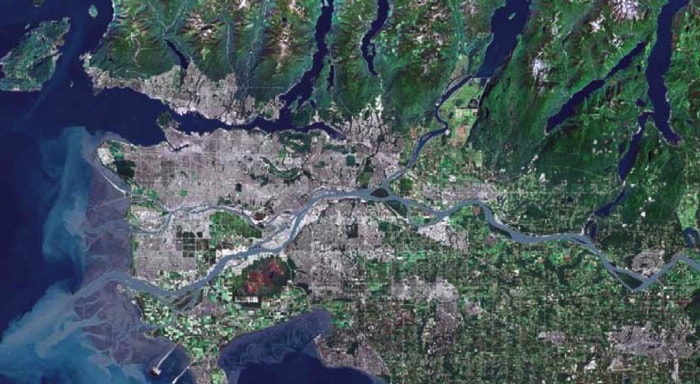A new accord to limit and shape growth across Metro Vancouver for the next 30 years is now in effect after the only holdout city – Coquitlam – dropped its objections and signed on.
The new regional growth strategy was adopted July 29 and replaces the former Livable Region Strategic Plan.
It should be more enforceable, requiring cities to concentrate dense development within an urban containment boundary that protects farmland, low-density rural areas and green space from sprawl.
But the key changes are new rules to limit the redevelopment of industrial land into condos and stem the rapid proliferation of suburban office parks in areas hard to serve with transit.
"That imposes tremendous public costs," Burnaby Mayor and Metro regional planning chair Derek Corrigan said.
Inefficient development undercuts transit use and increases road congestion and air pollution, he said, increasing public costs in other ways.
Critics, including some Coquitlam reps, had argued the plan is regional in name only because Metro granted too much flexibility to each city to gain their support.
That means, for example, golf courses are protected as green space in some cities but available for redevelopment in others.
A committee of regional planners is to determine within a year whether to recommend changes to make the plan more consistent.
Corrigan conceded the new protections to preserve land for industry and to slow office-park sprawl could have been stronger.
"It was a hard battle to make the gains we did make," he said. "But these gains were a great stride forward from our 1996 plan."
A citizens' watchdog group said the land-use deal was drawn up with little public awareness as planners in each city customized how it would apply locally.
Most disappointed will be a coalition of business groups that wanted looser development rules since most of the land base is already protected by the Agricultural Land Reserve or other designations.
The Business Coalition for a Sustainable Region feared more red tape on development would stifle job growth and constrict the shipment of goods through the growing Pacific Gateway.
Metro and Coquitlam seemed headed for arbitration over the impasse, but Coquitlam reps backed down after mediated talks.
Had Coquitlam kept its heels dug in, the delay might have made the growth strategy a political football in November's civic election, unravelling the agreement.
Coquitlam Mayor Richard Stewart said a couple of councillors still don't support the plan and he also has concerns.
"The region has gone to great lengths to accede to the wishes of each community," Stewart said.
"It's better than nothing but it has some significant shortcomings. Those of us who believe in regional planning might perceive that this isn't regional planning."
The strategy was ratified by all 20 cities, the Tsawwassen First Nation, TransLink and both neighbouring regional districts after several years of work, three sets of consultations and dozens of public meetings.
Port Moody only signed after it was exempted from meeting its population growth targets until after the Evergreen Line is built.
Metro planners predict the region will attract a million more residents over the next three decades and the plan aims to accommodate them without sacrificing farmland and green space.
The vision is to build compact urban communities where residents can more easily walk, bike or take transit from home to where they work, study or play.
